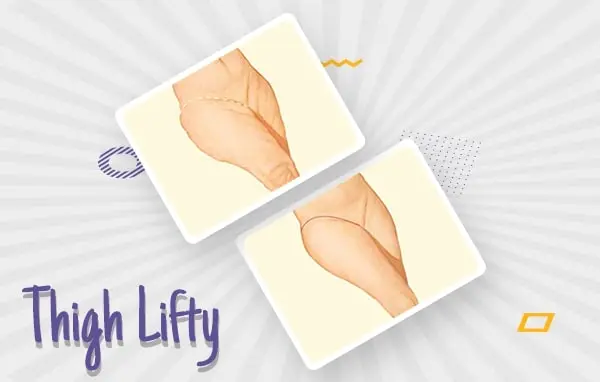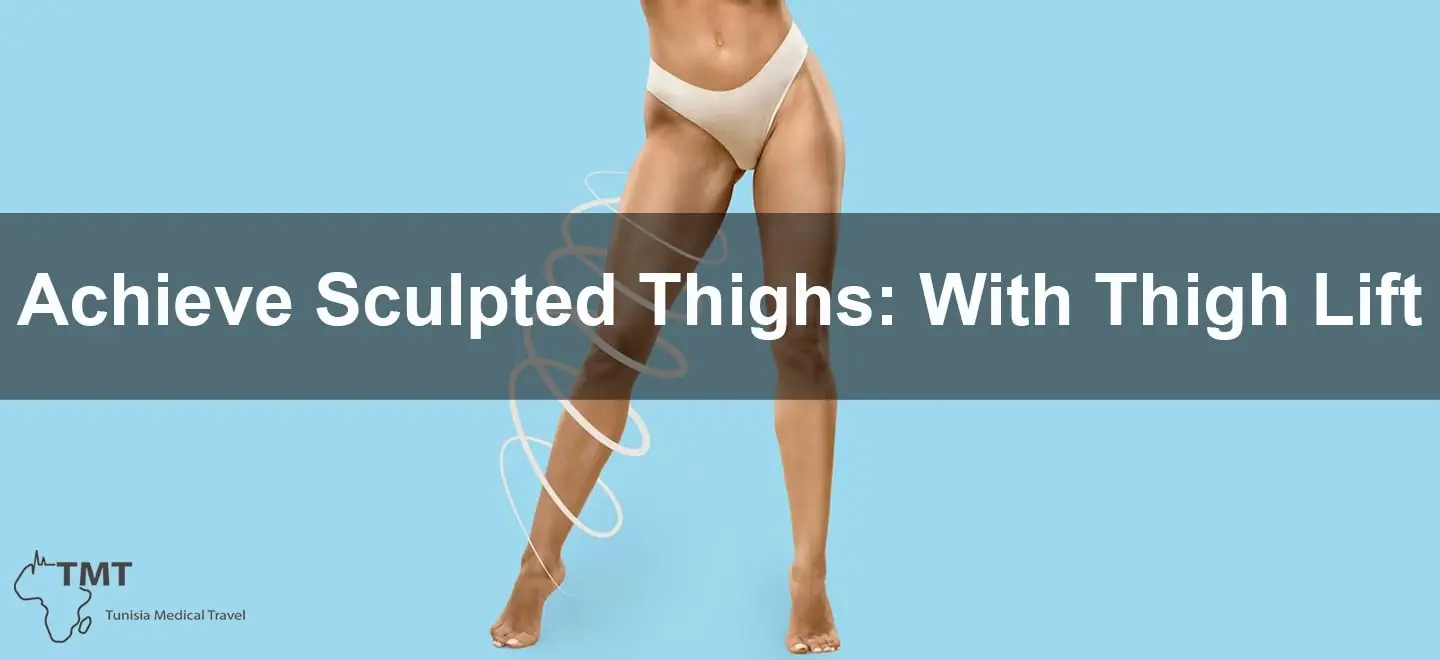Achieve Sculpted Thighs: With Thigh Lift
Achieve Sculpted Thighs: With Thigh Lift
What is a Thigh Lift?
A thigh lift, or thighplasty, is a procedure designed to tighten the skin around the thigh and improve its contour. There are a number of different techniques that can be used to accomplish this goal. The technique that’s right for you will depend on how much extra skin and fat you have and where it is located. Sometimes, there is excess fat and skin on the inner thigh, other times it may be on the outer thigh. Frequently, it is an issue of the entire thigh. Actually, not all of the fat on the thighs can be removed by liposuction, and not all of the skin tightening can be achieved by a skin excision procedure. Thus, a combination of liposuction and skin excision may be needed for the best result. Consequently, it’s important for you to understand your needs and for your surgeon to help you understand what your needs are and how they can be best addressed.
Types of thigh lift surgery
Bilateral thigh lift: A bilateral thigh lift is a more extensive form of surgery and is appropriate for patients who have a large amount of loose skin on the front and outside of the thigh. With a bilateral thigh lift, the recovery periods and risks are higher than the above procedures, as both the outer and inner thigh are involved. The results can be quite dramatic and most patients feel that the scars are an acceptable tradeoff for the improved look of their thighs.
Medial thigh lift: This type of thigh lift is recommended for patients of normal weight who are troubled mainly by the appearance of their upper inner thigh. Incisions for a medial thigh lift are limited to the groin area and recovery time usually takes 1-2 weeks. There are fewer risks for circulation problems or infection than the inner thigh lift because the area does not extend down to the knee or upward to the buttocks. However, the results are less dramatic and therefore some patients choose not to have this form of surgery.
Inner thigh lift: One of the most common forms of thigh lift surgery, the incisions for an inner thigh lift are usually made within the groin, and in some cases extend downward and to the buttock crease. This surgery is recommended for patients who have a large amount of loose skin. With previous versions of this surgery, it created a very tight, unnatural appearance to the inner thigh. However, with newer techniques available, it can give a very natural and more appealing look. An inner thigh lift is often combined with liposuction and may be part of a total body lift, which is a more comprehensive form of cosmetic surgery that addresses several problem areas at once.
Who is a suitable candidate for thigh lift surgery?
Patients whose weight is relatively stable (i.e. no yo-yo dieting). The best candidates for thigh lift surgery are patients with a lot of soft tissue atrophy of the thigh area. Patients with marked amounts of internal or external skin laxity and those with massive weight loss. Marked laxity can be due to a variety of factors (e.g. genetics, sun exposure, smoking, etc.). Age can be a factor, but is mostly relevant in terms of skin tone and not actual age numbers. Younger patients will often have improved results due to better skin tone and elasticity; however, some patients in their 20’s may have laxity issues if they have lost a significant amount of weight. Any patient (as in any surgery) must be in overall good health and have realistic expectations from the surgery. They should perform the surgery for themselves and not to fulfill any desires or goals of another person. Oftentimes patients will come in for a consultation and only a medial thigh lift is recommended. The overlying factor is that the patient should be well educated on the surgery and feel comfortable in their decision since it is a surgery with a longer recovery time.
What happens during thigh lift surgery?
your surgeon will make several incisions on your thighs. Depending on the amount of correction needed, the incisions may be limited to the groin area or may extend down to the knee. Excess skin will be removed and the underlying tissue will be reshaped and tightened. This is done with deep permanent sutures within underlying tissues. The doctor may use suction to remove any excess fat, then lift the tissue and secure it with deep sutures. The skin is then redraped and excess skin is removed. The skin is sutured with absorbable or non-removable sutures, with tape and a compressive dressing applied over the entire area.These techniques commonly used simply remove excess skin and fat, but some actually lift tissues giving a more vertical lift in the skin.

Instructions for thigh lift recovery
Begin buttressing your recuperation area well in advance of your surgical date, as eventual results will be well worth the effort. If your groin and lower body surgery is performed at a hospital, you will need support and assistance upon returning home. Often times, individuals aid to provide, on a short-term basis, not so much for assistance getting to the bathroom, eating meals and taking medications, but more so to assist with walking a few times daily in the house for the first week. Other useful preparations include: moving frequently used items to easy-to-reach areas, and setting up a ‘recovery station’ near the TV with plenty of movies, books and magazines within arm’s reach. You should also consider a recovery-area ice chest stocked with plenty of healthy foods and plenty of fluids, eliminating the need to drive to the store. While you must avoid exertion and forceful movement, an activity that increases your heart rate, or heavy lifting in the early postoperative period, ambulation starting the day of surgery is all-important. You should be able to get to the bathroom and to your kitchen with help on the day of surgery, and a near normal, although careful, pace by the end of the first week. Starting in the second week, you should be able to take walks outside the house. High impact cardiovascular activities such as running, aerobic dance or strenuous leg exercises should be avoided until cleared by your surgeon. In order to avoid blood clots in the legs, you should also refrain from prolonged inactivity or sitting for a long period of time, so walking and frequent short rests in bed are best.
What about the scar resulting from thigh lift surgery?
The scar after a thigh lift can be quite significant. It runs down the inside of the thigh from the level of the groin to the level of the knee. A full lift will also leave a scar extending around the back of the upper thigh. The scars are initially quite red and raised and take approximately six weeks to settle. They then usually gradually fade taking up to 18 months to do so, and lower limbs scars often continue to improve for up to two years. The quality of the final scar is dependent on many factors. Poor healing, such as that which can occur in a smoker, will produce a worse scar. The patient’s age and skin quality are important, as a thinner more fragile skin is at higher risk of producing a suboptimal scar. It is also possible that some patients will develop thickened or lumpy scars, and in a small proportion of patients the scars can become wide. Wide or lumpy scars can be treated with injections of steroid in the scar tissue. This may need to be done by a dermatologist familiar with scar management patterns, and it does carry a small risk of causing an indentation in the area treated. In the long term, in up to ten percent of cases, patients may wish to consider scar revision surgery. This is usually a relatively minor procedure provided it is being done to improve a mature scar rather than to act on a scar still undergoing natural healing.
It is essential that patients who undergo thigh lift surgery are fully aware that the scars are the necessary price to pay for improving the contour of the thighs, and are also aware of the possibility of developing a suboptimal scar. It is for these reasons that a thigh lift is only recommended for those patients sufficiently bothered by the appearance of their thighs to feel that the likely appearance of the scars is justified.
Advantages of thigh lift
Thigh lift is an excellent procedure for those with loose or sagging skin on their thighs. This can occur due to aging, genetics, or following marked weight loss. There are several advantages of thigh lift. A thigh lift is one of the most powerful operations to reshape the body and improve body image. It causes a significant and positive change in the silhouette. You will be able to wear close-fitting clothes without embarrassing skin bulges or « saddle-bags ». When your thighs are internally and externally shaped with the thigh lift, going to the beach or swimming will hold no anxiety about body image. You will look great in shorts! Thighs which have been embarrassing due to appearance, when covered up even in hot weather, can become a personal asset and source of pride. During the first year after thigh lift, most of your results will be evident. After a period of several months, you should be able to return to activity and exercise levels which essentially relate to your accustomed lifestyle. At this point, it is important to keep in mind that substantial weight change, in either direction, can affect your results. So, when you select a plastic surgeon to perform a thigh lift, it is extremely important to select one who adopts the procedure as a real and meaningful body-contouring operation and is experienced in post-weight-loss body reshaping.

